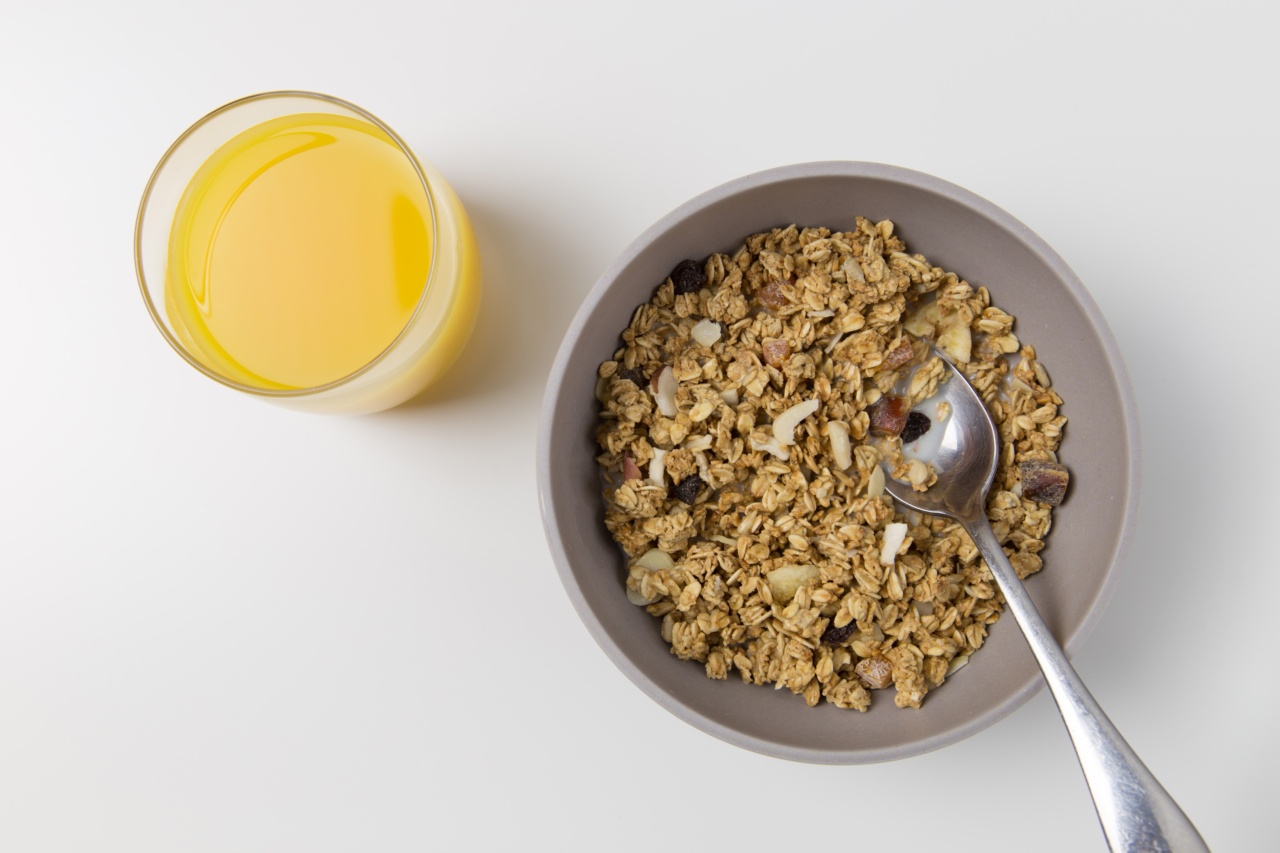Fiber is an essential nutrient that plays a crucial role in maintaining good health. While many people associate fiber with digestive health, its benefits go beyond that.
Including an adequate amount of fiber in your diet can lead to various health benefits, including improved digestion, weight management, and reduced risk of chronic diseases. Let’s explore how you can maximize your health by incorporating fiber-rich foods into your daily eating routine.
The Importance of Fiber in Your Diet
Fiber is a type of carbohydrate found in plant foods that cannot be broken down by our digestive enzymes.
While it may not provide us with calories or nutrients, it is still an important part of a healthy diet due to its many health-promoting properties.
1. Improved Digestive Health
One of the most well-known benefits of fiber is its positive impact on digestive health. It adds bulk to your stool, making it easier to pass and preventing constipation.
Additionally, fiber aids in maintaining regularity and preventing gastrointestinal diseases such as diverticulitis and hemorrhoids.
Furthermore, fiber acts as a prebiotic, providing nourishment for the beneficial bacteria in your gut. These bacteria play a crucial role in digestion and overall gut health.
By feeding them with fiber-rich foods, you can promote a healthy gut microbiome and strengthen your digestive system.
2. Weight Management
If you’re looking to maintain a healthy weight or shed a few pounds, fiber can be a valuable tool. High-fiber foods are often low in calories but high in volume, helping you feel full and satisfied without consuming excess energy.
When you eat foods rich in fiber, such as fruits, vegetables, whole grains, and legumes, you tend to eat less overall. This can prevent overeating and assist in controlling your appetite, leading to weight loss or weight maintenance over time.
3. Blood Sugar Control
Fiber plays a vital role in managing blood sugar levels, making it particularly beneficial for individuals with diabetes or those at risk of developing the condition.
Including fiber-rich foods in your meals can slow down the absorption of sugar into your bloodstream, preventing spikes and crashes in blood sugar levels.
Additionally, high-fiber foods often have a lower glycemic index, meaning they have a smaller impact on blood sugar levels.
This can help regulate insulin production and improve insulin sensitivity, reducing the risk of diabetes and improving overall blood sugar control.
4. Cardiovascular Health
Consuming an adequate amount of fiber is associated with a reduced risk of developing cardiovascular diseases. Soluble fiber, in particular, has been shown to lower LDL cholesterol levels, also known as “bad” cholesterol.
By binding to cholesterol in the digestive tract and preventing its absorption, soluble fiber helps decrease the amount of LDL cholesterol circulating in your bloodstream.
This can reduce the risk of plaque formation in the arteries, keeping your heart healthy and lowering the chances of heart disease and stroke.
5. Reduced Risk of Chronic Diseases
Research suggests that a high-fiber diet can lower the risk of developing various chronic diseases, including certain types of cancer. The exact mechanisms behind this protective effect are not fully understood, but several theories exist.
Fiber may help promote healthy weight management and prevent obesity, which is a known risk factor for cancer. Additionally, its ability to regulate blood sugar levels and lower insulin production may also play a role in reducing cancer risk.
How to Incorporate More Fiber into Your Diet
Now that you understand the importance of fiber for your health, let’s explore how to incorporate more of it into your daily diet.
The recommended daily intake of fiber is around 25 grams for women and 38 grams for men, but most individuals do not meet this goal.
Here are some practical tips to increase your fiber intake:.
1. Choose Whole Grains
Switch refined grains, such as white bread and pasta, with whole grain alternatives. Whole grain products are higher in fiber and contain more vitamins and minerals.
Look for labels that say “100% whole grain” or “whole wheat” to ensure you’re making a healthy choice.
2. Load Up on Fruits and Vegetables
Fruits and vegetables are excellent sources of fiber. Aim to include a variety of them in your meals and snacks. Berries, apples, pears, broccoli, carrots, and leafy greens are all high in fiber and packed with essential nutrients.
3. Incorporate Legumes
Legumes, such as beans, lentils, chickpeas, and peas, are not only high in fiber but also rich in plant-based protein. They can be added to soups, salads, stews, or used as a meat substitute in various dishes.
Experiment with different recipes to find your favorite way to enjoy legumes.
4. Snack on Nuts and Seeds
Nuts and seeds, such as almonds, chia seeds, and flaxseeds, are not only crunchy and delicious but also great sources of fiber. Include them in your snacks or sprinkle them on top of salads, yogurt, or oatmeal to boost your fiber intake.
5. Opt for Fiber Supplements
If you struggle to meet your fiber needs through diet alone, fiber supplements can be an option. However, it’s always best to obtain nutrients from whole foods whenever possible.
Consult with a healthcare professional before starting any supplements to determine the right dosage for you.
Conclusion
Fiber is an essential nutrient that offers numerous health benefits when incorporated into your daily diet.
From improved digestive health and weight management to better blood sugar control and reduced risk of chronic diseases, fiber plays a crucial role in maximizing your overall well-being.
Make an effort to include fiber-rich foods, such as fruits, vegetables, whole grains, legumes, nuts, and seeds, in your meals and snacks.
By doing so, you’ll be taking significant steps towards optimizing your health and ensuring your body gets the nutrition it needs!.































